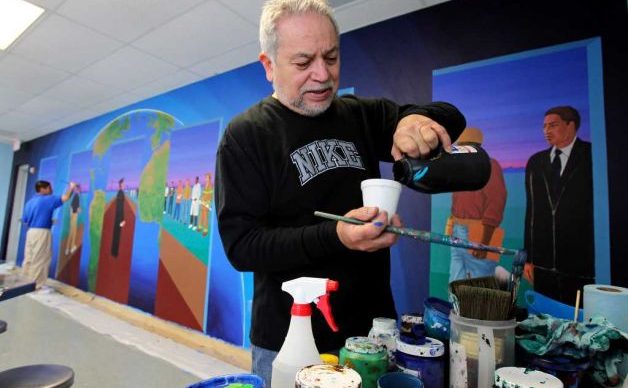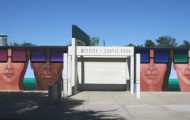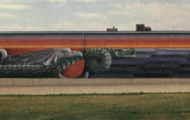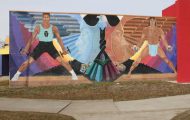Emanuel Martinez
Emanuel Martinez is a Denver native whose artistic journey grew out of a troubled childhood. He was active in the Chicano Movement and Crusade for Justice. Martinez has many well-known art pieces not only in the Denver area but around the world. He founded The Emanuel Project as a means to help at-risk youth through the power of art.
-written by Molly Kimbley
1965
Emanuel Martinez Graduates from Manual High School
In 1965 Chican@ muralist and painter, Emanuel Martinez graduated from the underfunded and underestimated Manual High School. From an early age he knew he wanted to pursue art but actively sought to resist racial discrimination in schools. He founded a MEChA (Moviemento Estudiantil Chicano de Aztlán) chapter on campus. Following his senior year at Manual, he enrolled at Metropolitan State College of Denver but similar to Rodolfo "Corky" Gonzales whom also graduated from Manual, was forced to leave due to financial difficulties. At this point was an active member of the Crusade for Justice.
~Amy Hernandez
1971
Emanuel Martinez mural: “Eyes on the Park”
Painted in 1971 by Emanuel Martinez, "Eyes on the Park" (or "Shades") reveals the strong unity and diversity of the surrounding community.
-written by Molly Kimbley
1977
Emanuel Martinez mural: “Urban Dope, Rural Hope”
Across from the Sun Valley housing projects, Emanuel Martinez painted this mural with fellow Chicano artists (Elfego Baca, Ernie Gallegos, Roberto Roybal, and Carlos Sandoval) and with many of the neighborhood's children. It is Denver's largest mural and portrays opposing images of hope and deterioration. On hope's side is an agricultural family and romanticized image of Chicano life. The conflicting sight of deterioration is symbolic of danger and death due to drug use.
-written by Molly Kimbley
1978
Emanuel Martinez mural: “La Alma”
Emanuel Martinez helped establish La Alma Recreation Center in 1972. His mural "La Alma," formed as a community project in 1978, exists on the building as a tribute to the neighborhood and its colorful soul. Its imagery reflects notions of balance, past and present, urban and rural.
-written by Molly Kimbley














